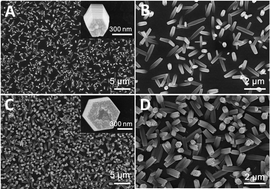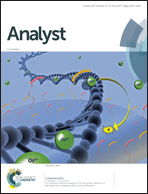Controllable Mn-doped ZnO nanorods for direct assembly of a photoelectrochemical aptasensor
Abstract
A label-free photoelectrochemical (PEC) aptasensor for K+ was first constructed by direct self-assembly of the K+ aptamer onto the electrodeposited Mn-doped ZnO nanorods. In the presence of K+, the conformation of G-quadruplex changes to a K+-stabilized conformation, which can efficiently prevent the quercetin electron donor from reaching the functionalized photoanode, thus proportionately affecting the quercetin-enhanced photocurrent response. Under the optimal experimental conditions, the fabricated biosensor exhibited a linear response in the K+ concentration range of 0.012 to 12.32 nmol L−1, with a detection limit of 4.0 pmol L−1, which was 3–5 orders of magnitude lower than that of most of the recently reported methods. The presence of other ions did not interfere with the detection of K+, and the results in serum samples agreed well with those obtained by ICP-MS. Using K+ as the detection model, this novel PEC aptasensor exhibited a good performance in terms of ultrasensitivity, selectivity and simplicity, and it was economical. As regards the electrode modification, this work provided a convenient direct self-assembly strategy that did not require the use of ionic polymers such as PDDA as a binder. Thus, this study paves the way for the immobilization of molecular probes for label-free PEC aptasensing.



 Please wait while we load your content...
Please wait while we load your content...